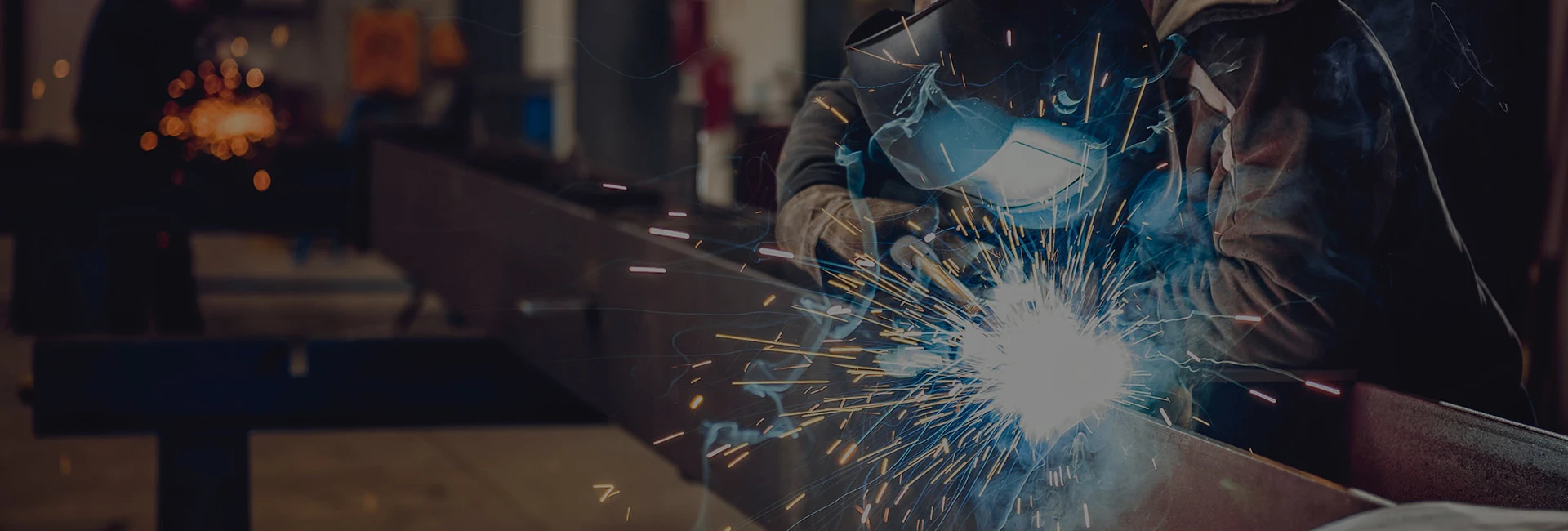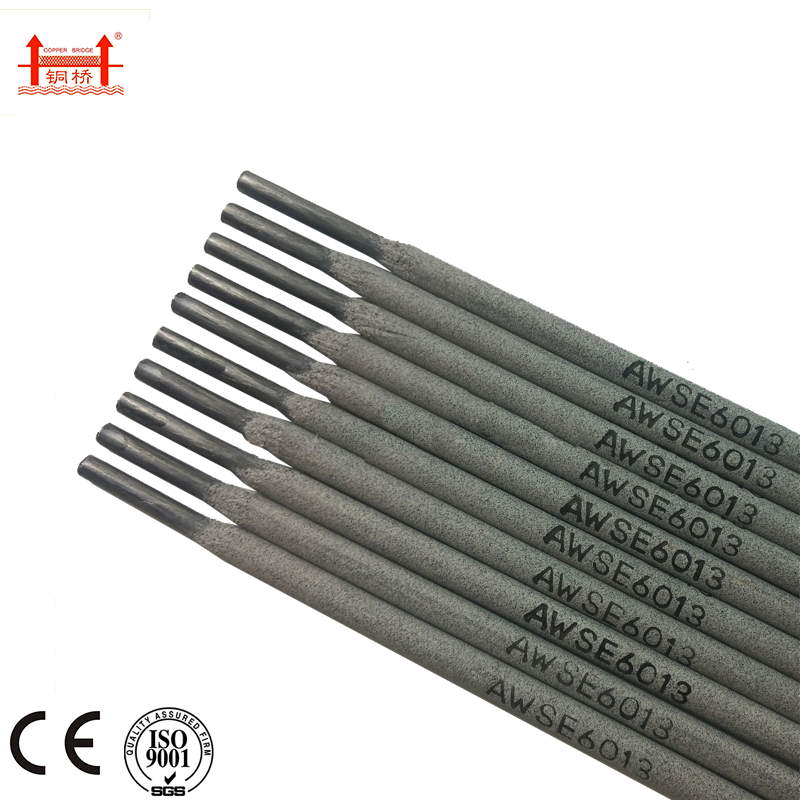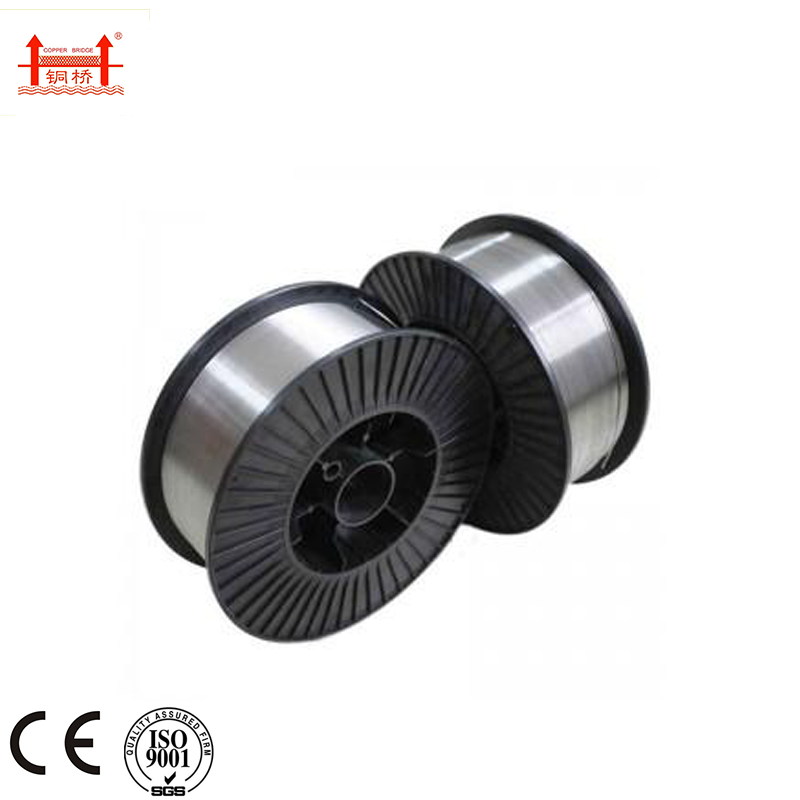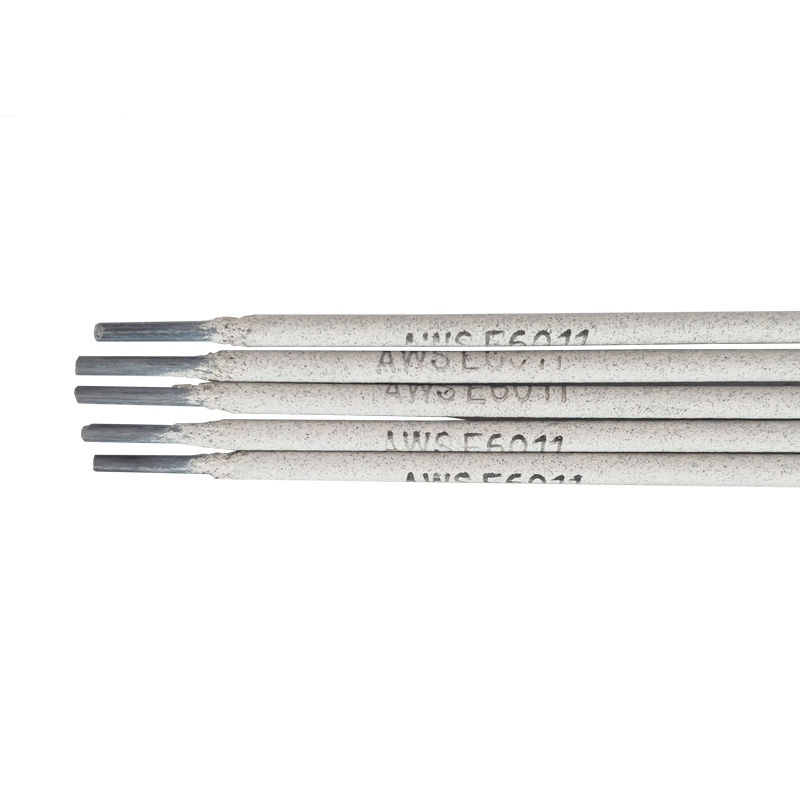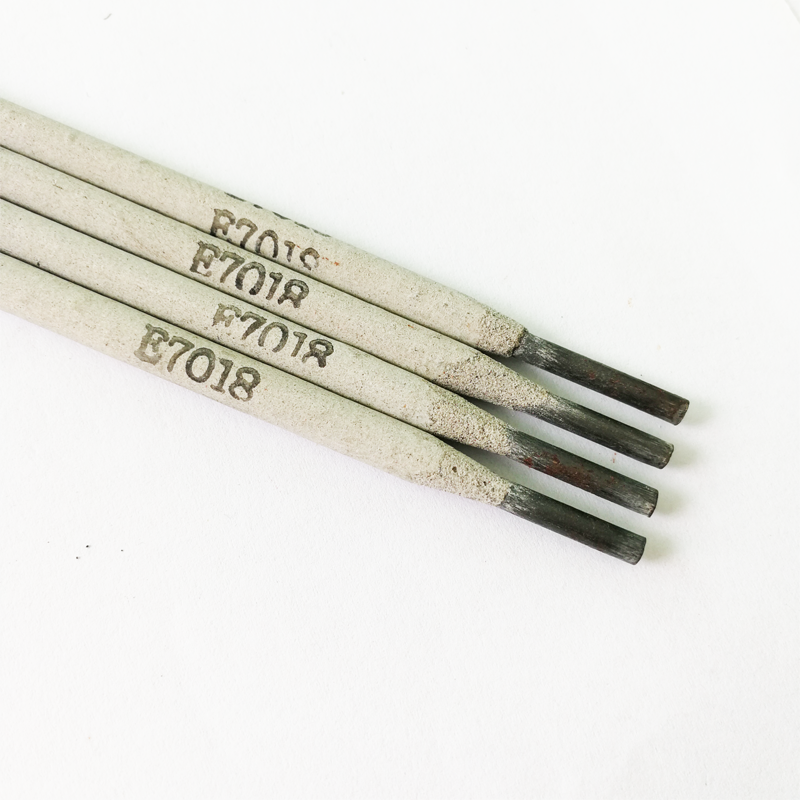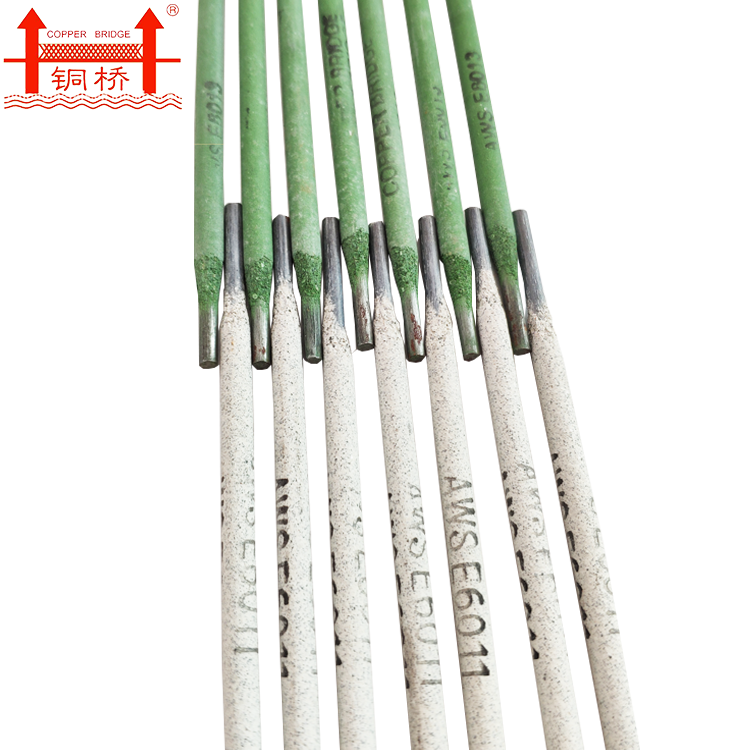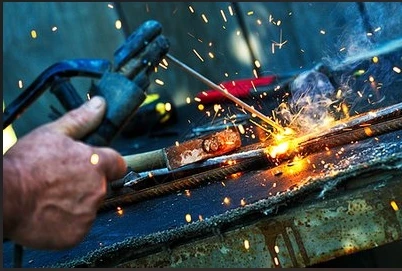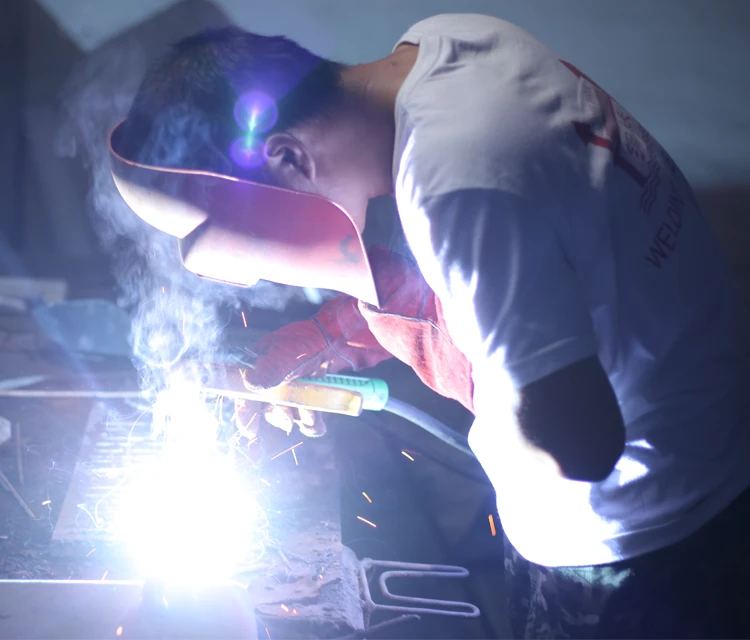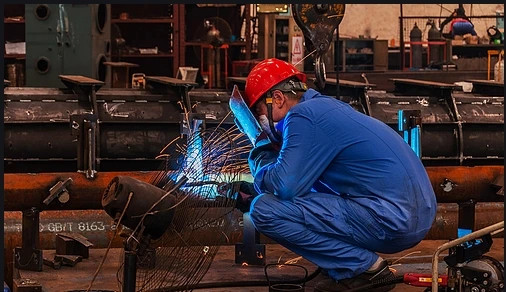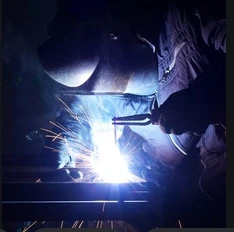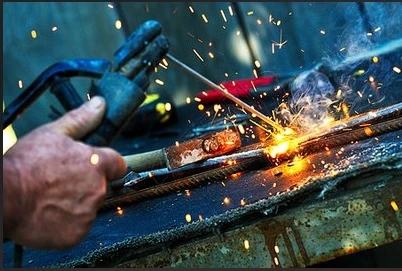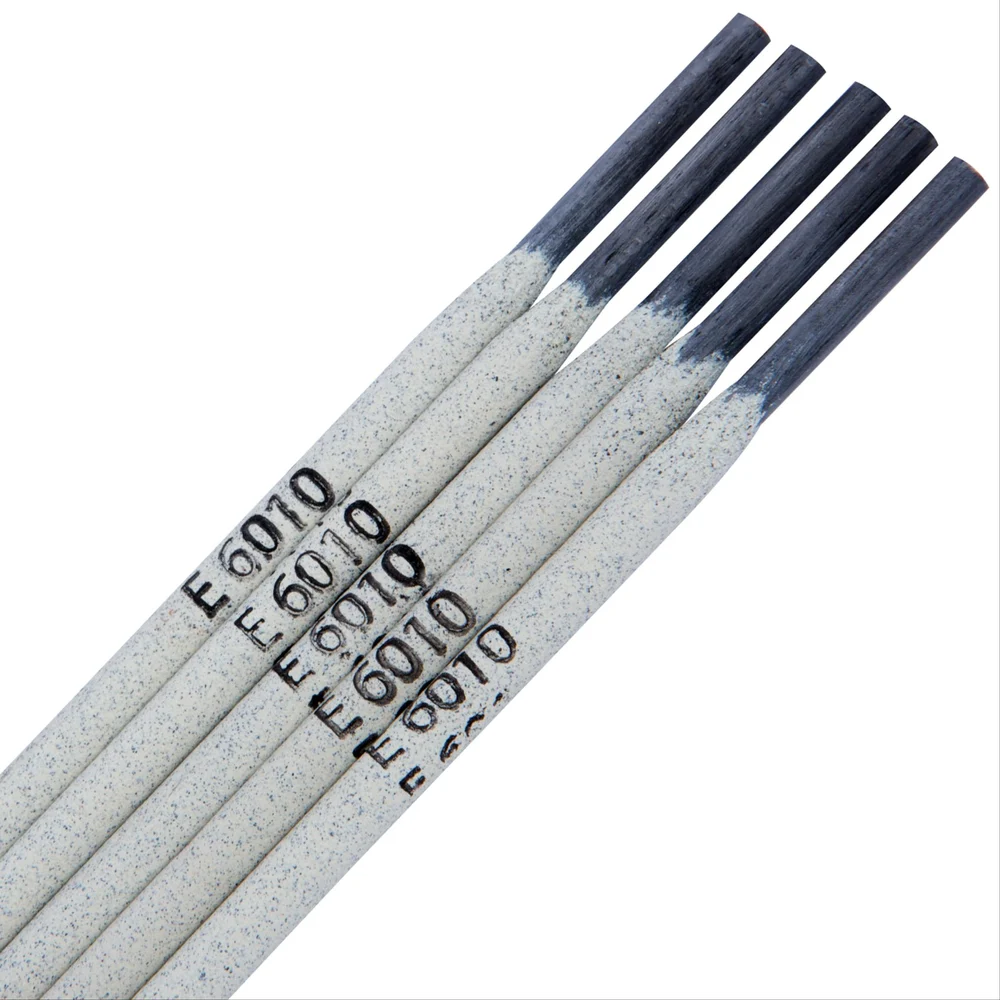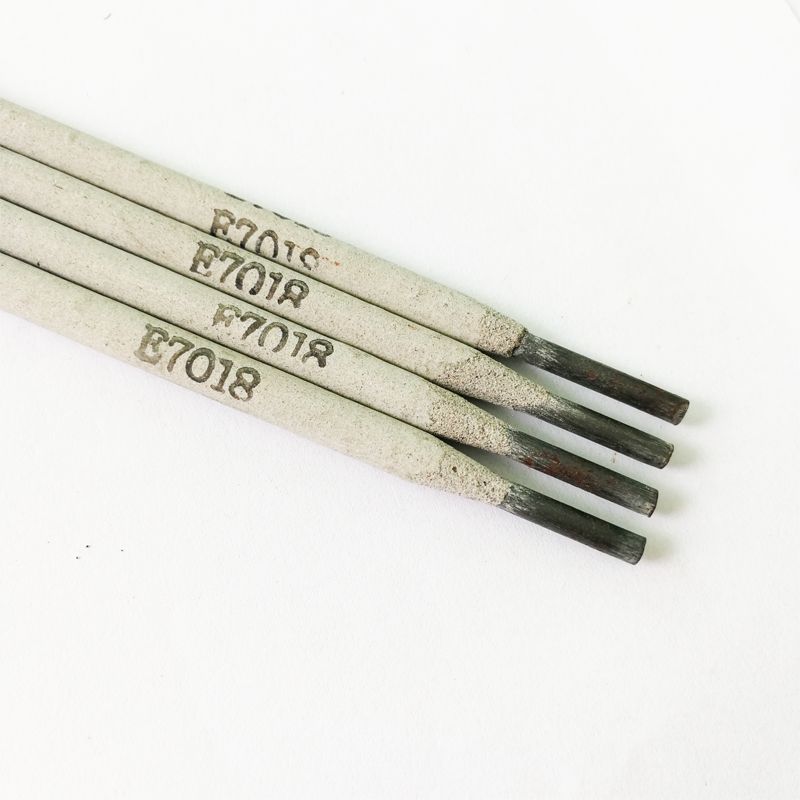E316L 16 Electrode: Premium Stainless Steel Welding Rods
Aug . 16, 2025 08:00
Understanding the Versatility of Stainless Steel Electrodes E316L-16 in Modern Welding
In the intricate world of metal fabrication and industrial construction, the selection of the correct welding consumable is paramount to ensuring structural integrity, longevity, and performance under extreme conditions. Among the diverse array of welding electrodes, the e316l 16 electrode stands out as a critical component, widely recognized for its superior corrosion resistance and excellent mechanical properties. This specific classification, derived from American Welding Society (AWS) standards, indicates a low-carbon (L) stainless steel electrode designed for welding molybdenum-bearing austenitic stainless steels, such as AISI 316, 316L, and 317L. The designation "16" in e316l 16 electrode refers to the type of flux coating, which is typically rutile-based, providing an excellent arc stability, minimal spatter, and a self-peeling slag for an aesthetically pleasing weld bead. Understanding what does 316L mean is crucial; the 'L' signifies a low carbon content (0.03% maximum), which is instrumental in minimizing carbide precipitation during welding, thereby preventing intergranular corrosion. This characteristic makes the e316l-16 welding rod an indispensable choice for applications requiring enhanced resistance to pitting and crevice corrosion, particularly in environments exposed to chlorides or sulfuric acid. The demand for such specialized welding consumables is experiencing a steady growth, fueled by expansion in petrochemical, pharmaceutical, and food processing industries where material integrity against aggressive media is non-negotiable. Industry trends indicate a consistent investment in advanced materials and welding techniques to meet stringent environmental regulations and operational safety standards, further solidifying the position of e316l electrode as a preferred solution for demanding projects.
Unveiling the Manufacturing Prowess: The Stainless Steel Electrodes E316L-16 Production Journey
The meticulous manufacturing of Stainless Steel Electrodes E316L-16 is a testament to precision engineering, ensuring each e316l 16 electrode delivers consistent, high-quality performance. The journey begins with the selection of premium core wire, typically made from high-purity 316L stainless steel, which undergoes rigorous metallurgical testing to confirm its chemical composition and mechanical properties. This raw material, characterized by its low carbon content and strategic alloying with molybdenum, is pivotal for the electrode's ultimate corrosion resistance. Subsequently, a carefully formulated flux coating, comprising various minerals, binding agents, and deoxidizers, is applied to the core wire through an extrusion process. This coating not only protects the molten weld pool from atmospheric contamination but also contributes to arc stability, slag formation, and the deposition of desired alloying elements into the weld metal. After extrusion, the electrodes undergo precise drying and baking cycles in controlled ovens. This critical step removes moisture from the flux, which if left unaddressed, could lead to hydrogen-induced cracking in the weld. Post-baking, electrodes are subjected to a battery of stringent quality control tests, adhering to international standards such as ISO 3581-A, AWS A5.4, and ANSI specifications. These tests encompass radiographic inspection for internal defects, tensile strength, impact toughness, and corrosion resistance tests to validate the weld deposit's integrity. The result is a robust e316l 16 electrode designed for exceptional service life in demanding industrial applications. Its applicability spans critical sectors including petrochemical processing, where it welds pipelines and storage tanks exposed to corrosive chemicals; metallurgy, for fabricating high-alloy steel components; and water treatment facilities, where its anti-corrosion properties are essential for long-term infrastructure. In these typical application scenarios, the e316l 16 electrode welding process facilitates energy-efficient operations by reducing rework and extending component lifespan, thereby offering significant cost savings and enhanced safety.
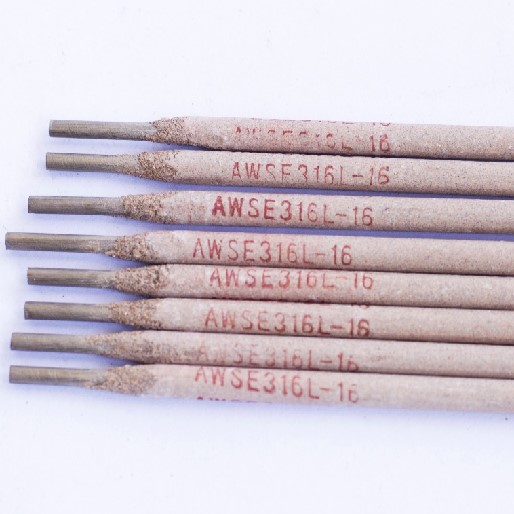
Technical Parameters and Performance Benchmarks of E316L-16 Electrodes
The performance of an e316l 16 electrode is quantifiably defined by its precise technical parameters, which dictate its suitability for specific welding applications. The 'L' in E316L-16 signifies its low carbon content, typically below 0.04%, which is critical for minimizing intergranular corrosion, especially when welding thick sections or components that will undergo post-weld heat treatment. The presence of molybdenum, usually between 2.0% and 3.0%, significantly enhances its resistance to pitting and crevice corrosion, particularly in chloride-rich environments. The rutile-based coating (indicated by '16') ensures excellent operating characteristics, including a smooth and stable arc, minimal spatter, and easy slag removal, which collectively contribute to high-quality weld beads and improved productivity. When evaluating an e 316l 16 electrode, key mechanical properties such as tensile strength, yield strength, and elongation are paramount. For instance, typical weld metal deposited by a quality e316l-16 welding rod exhibits a tensile strength of approximately 550-600 MPa (80-87 ksi), a yield strength of 380-450 MPa (55-65 ksi), and an elongation of 35-45%, indicating excellent ductility. These properties ensure that the weld joint can withstand significant stresses and deformations without failure. The e316l 16 electrode welding process is characterized by its adaptability across various positions, though flat and horizontal positions are typically preferred for optimal results. The ability of the e316l 16 electrode to produce welds with a ferrite content optimized for crack resistance, typically between 3-10 FN (Ferrite Number), further underscores its reliability. This balanced ferrite content is crucial for preventing hot cracking while maintaining adequate ductility and corrosion resistance. The adherence to strict AWS A5.4 and ISO 3581-A standards guarantees that these electrodes consistently meet or exceed the industry's highest performance benchmarks, providing engineers and fabricators with a trustworthy solution for their most challenging stainless steel welding needs.
| Parameter | Unit | Typical Value (AWS A5.4 E316L-16) |
|---|---|---|
| Tensile Strength | MPa (ksi) | ≥ 520 (75) |
| Yield Strength (0.2% Offset) | MPa (ksi) | ≥ 320 (46) |
| Elongation | % | ≥ 30 |
| Impact Strength (Charpy V-notch @ -196°C) | J (ft-lb) | ≥ 47 (35) |
| Carbon (C) Content | % | ≤ 0.04 |
| Chromium (Cr) Content | % | 17.0 - 20.0 |
| Nickel (Ni) Content | % | 11.0 - 14.0 |
| Molybdenum (Mo) Content | % | 2.0 - 3.0 |
| Ferrite Number (FN) | FN | 3 - 10 |
Broadening Horizons: Applications Across Critical Industries
The robust characteristics of Stainless Steel Electrodes E316L-16 make them indispensable across a spectrum of industries where corrosion resistance and structural integrity are non-negotiable. In the Petrochemical Industry, for instance, the e316l-16 is extensively used for welding components of reactors, heat exchangers, pipelines, and storage tanks that handle highly corrosive media such as sulfuric acid, phosphoric acid, and various chlorides. The low carbon content inherent in what does 316L mean helps prevent intergranular corrosion, a common issue in stainless steel welds exposed to elevated temperatures and corrosive environments, thus ensuring the long-term operational safety and integrity of these critical infrastructures. For the Pharmaceutical and Food Processing Industries, stringent hygiene and purity standards necessitate materials that are resistant to corrosion from cleaning agents and product residues. The e316l electrode excels here, used in fabricating sanitary piping, storage vessels, and processing equipment. Its ability to create smooth, crack-free welds minimizes areas where contaminants could accumulate, supporting compliance with FDA and GMP regulations. In Water and Wastewater Treatment Plants, components like pumps, valves, and piping systems are constantly exposed to aggressive aqueous solutions and disinfectants. The superior pitting and crevice corrosion resistance of the e316l 16 electrode ensures the durability and extended service life of these vital systems, reducing maintenance costs and ensuring uninterrupted service. Furthermore, the Power Generation Sector, particularly in systems utilizing saltwater cooling or flue gas desulfurization (FGD) units, benefits immensely from the resilience of the e316l 16 electrode welding process against corrosive condensate. Its robust performance under these harsh conditions contributes to the reliability and efficiency of power plants, minimizing downtime associated with material degradation. The adaptability of the e 316l 16 also extends to shipbuilding, pulp and paper, and textile industries, each benefiting from its specific blend of strength, weldability, and exceptional corrosion resistance. The versatility of this welding consumable underscores its pivotal role in facilitating advanced industrial operations globally.
Technical Advantages and Competitive Edge of E316L-16
The competitive landscape for welding consumables is fierce, yet the e316l 16 electrode maintains a significant edge due to its distinctive technical advantages. Its primary strength lies in its exceptional corrosion resistance, particularly against pitting and crevice corrosion in chloride environments, which is a common failure mechanism for other stainless steels like 304L. This superior resistance is attributed to its precise molybdenum content and low carbon composition, ensuring the integrity of welds even in highly aggressive chemical or marine environments. Furthermore, the e316l-16 welding rod offers excellent weldability in all positions, facilitating complex fabrication tasks and improving operational flexibility. The rutile coating (16 designation) provides a stable arc, minimal spatter, and produces a finely rippled bead appearance with easy slag removal, significantly reducing post-weld cleaning and rework. This translates directly into labor cost savings and increased productivity on the shop floor. When comparing the e316l electrode to similar products, such as E308L-16, the key differentiator is its molybdenum content, which E308L-16 lacks. This makes the e316l 16 electrode the superior choice for applications requiring enhanced resistance to sulfuric and phosphoric acids, as well as general pitting corrosion. Moreover, the controlled ferrite content in the weld metal, typically ranging from 3 to 10 Ferrite Number (FN), optimizes the balance between ductility and resistance to hot cracking, providing a robust and reliable weld joint. This technical sophistication translates into tangible benefits for end-users, including extended service life of welded components, reduced maintenance cycles, and enhanced operational safety. Investing in high-quality e316l 16 electrode welding solutions is not merely a purchase of consumables but a strategic decision that contributes to the long-term cost-effectiveness and reliability of critical industrial assets. The consistent performance and predictable results afforded by this specialized electrode make it an invaluable asset in high-stakes welding operations where failure is not an option.
Choosing Your Partner: Manufacturer Comparison and Custom Solutions
Selecting the right manufacturer for Stainless Steel Electrodes E316L-16 is as crucial as understanding the electrode itself. In a market flooded with options, discerning B2B decision-makers and technical personnel must prioritize several key factors beyond just price. A reputable manufacturer differentiates itself through unwavering commitment to quality, backed by rigorous certifications such as ISO 9001 for quality management, and adherence to international welding standards like AWS A5.4, ASME, and EN. Longevity in the industry, substantial investment in research and development, and a proven track record of innovation are also vital indicators of an authoritative supplier. For instance, Jinlong Welding Electrode Co., Ltd., with over two decades of dedicated service in the welding consumables sector, embodies these qualities. Our extensive experience, coupled with continuous R&D, ensures that our e316l 16 electrode not only meets but often exceeds industry benchmarks for performance and reliability. We pride ourselves on transparent testing data, readily available for our clients, reflecting our commitment to trustworthiness. Furthermore, Jinlong understands that off-the-shelf solutions may not always suffice for unique industrial challenges. Therefore, we offer bespoke custom solutions, collaborating closely with clients to develop electrodes tailored to specific material combinations, welding processes, or environmental conditions. This might involve fine-tuning the flux chemistry for specialized applications or optimizing electrode dimensions for automated welding systems. Our dedicated technical support team works alongside clients, from initial consultation to post-sale assistance, ensuring optimal performance and troubleshooting any potential issues. This partnership approach, combined with our certifications and consistent quality, provides our clients with not just a product, but a comprehensive welding solution. Our unwavering commitment to quality, innovation, and customer support makes us a preferred choice for companies seeking reliable and high-performance e316l 16 electrode solutions that deliver long-term value and minimize operational risks, emphasizing what e316l 16 meaning truly is in terms of operational excellence.
Real-World Success: E316L-16 Application Case Studies
The theoretical advantages of the e316l 16 electrode are consistently validated by its real-world application in critical industrial projects, demonstrating tangible returns on investment and enhanced operational efficiency. Consider a major chemical processing plant in the Gulf Coast, which faced persistent issues with intergranular corrosion in their stainless steel heat exchanger components due to exposure to aggressive chloride solutions. Previous welding consumables led to frequent maintenance shutdowns and costly replacements, impacting production schedules significantly. Upon consultation and recommendation of Jinlong's Stainless Steel Electrodes E316L-16, the plant implemented these electrodes for all repair and new fabrication of their 316L components. The low carbon content and molybdenum addition of the e 316l 16 significantly mitigated localized corrosion, extending the service life of these critical components by over 30%, resulting in an estimated annual saving of over $500,000 in maintenance and downtime costs. In another instance, a leading pharmaceutical equipment manufacturer sought to improve the weld quality and surface finish of their sanitary processing vessels, which are subject to stringent FDA approval. Utilizing the e316l-16 welding rod from Jinlong, they reported a dramatic reduction in weld defects and a smoother, more consistent weld bead, which reduced grinding and polishing time by 40%. This not only sped up their production cycle but also ensured higher compliance with regulatory cleanliness standards, enhancing their product's marketability and client trust. Furthermore, in a large-scale municipal wastewater treatment facility upgrade, the primary challenge was to weld new 316L stainless steel piping systems that would resist corrosion from diverse chemical effluents over decades. The project engineers chose e316l 16 electrode welding due to its proven resistance to pitting and crevice corrosion in such demanding environments. Three years into operation, the facility reports no signs of weld-related corrosion issues, a testament to the electrode's long-term durability and the technical expertise provided by the supplier. These cases underscore the authoritative performance and reliability that the e316l 16 electrode consistently delivers in challenging industrial settings, reinforcing its status as a trusted solution among industry professionals.
Ensuring Trust: FAQs, Delivery & Support for E316L-16
Building and maintaining trust with B2B clients extends beyond product quality; it encompasses comprehensive support, clear communication, and reliable service. For Stainless Steel Electrodes E316L-16, common inquiries often revolve around application specifics, storage, and performance nuances. Our FAQ module addresses these directly: "What does 316L mean in the context of corrosion resistance?" It signifies low carbon content, crucial for preventing intergranular corrosion in the heat-affected zone. "Is the e316l 16 electrode suitable for saltwater environments?" Absolutely, its molybdenum content provides excellent resistance to chloride-induced pitting. "What's the optimal storage for e316l-16 welding rod to maintain its integrity?" Electrodes should be stored in dry, well-ventilated areas, ideally in sealed container111s or heated ovens, to prevent moisture absorption which can lead to porosity and hydrogen cracking. Regarding delivery, we understand the critical nature of timely supply in industrial operations. Our robust supply chain and logistics network ensure efficient delivery cycles, typically within 7-14 business days for standard orders, with expedited options available for urgent requirements, clearly communicated at the time of order placement. Each shipment of e316l 16 electrode comes with comprehensive material test reports (MTRs) guaranteeing compliance with relevant standards. Our commitment to trustworthiness is further solidified by a comprehensive quality assurance policy and warranty commitments. All our products are backed by a standard 12-month warranty against manufacturing defects, underscoring our confidence in their quality and performance. Beyond sales, our dedicated customer support team comprises experienced welding engineers and technical specialists available for on-demand consultations, technical assistance, and troubleshooting. Whether it's advice on welding parameters for e316l 16 electrode welding or guidance on post-weld treatment, our support ensures that clients maximize the potential of our products, fostering long-term, reliable partnerships built on mutual trust and technical excellence. The profound e316l 16 meaning for our clients is synonymous with reliability and assured performance.
Conclusion: The Enduring Value of E316L-16 in Advanced Welding
The Stainless Steel Electrode E316L-16 stands as a cornerstone in the realm of advanced welding, particularly for applications demanding exceptional resistance to corrosion and high-temperature performance. Its meticulously engineered composition, characterized by low carbon and strategic molybdenum content, provides unparalleled protection against intergranular and pitting corrosion, making it an indispensable asset across petrochemical, pharmaceutical, water treatment, and power generation sectors. The "16" rutile coating ensures superior weldability, excellent bead appearance, and minimal post-weld cleaning, significantly contributing to operational efficiency and cost savings. As industries continue to evolve, facing increasing demands for material longevity, environmental compliance, and enhanced safety, the role of a reliable e316l 16 electrode becomes even more pronounced. The future of welding technology is moving towards smarter, more sustainable solutions, and consumables like the e316l 16 electrode are at the forefront of this evolution, enabling the construction of more durable and resilient infrastructures. Embracing high-quality e316l electrode solutions is not merely a tactical choice for current projects but a strategic investment in the long-term reliability and success of critical industrial operations.
References
- American Welding Society (AWS). AWS A5.4/A5.4M:2012, Specification for Stainless Steel Electrodes for Shielded Metal Arc Welding.
- International Organization for Standardization (ISO). ISO 3581-A:2012, Welding consumables — Covered electrodes for manual metal arc welding of stainless and heat-resisting steels — Classification.
- ASM International. (2000). ASM Handbook Vol. 6: Welding, Brazing, and Soldering.
- Lippold, J. C., & Kotecki, D. J. (2005). Welding Metallurgy and Weldability of Stainless Steels. John Wiley & Sons.
Related Video



